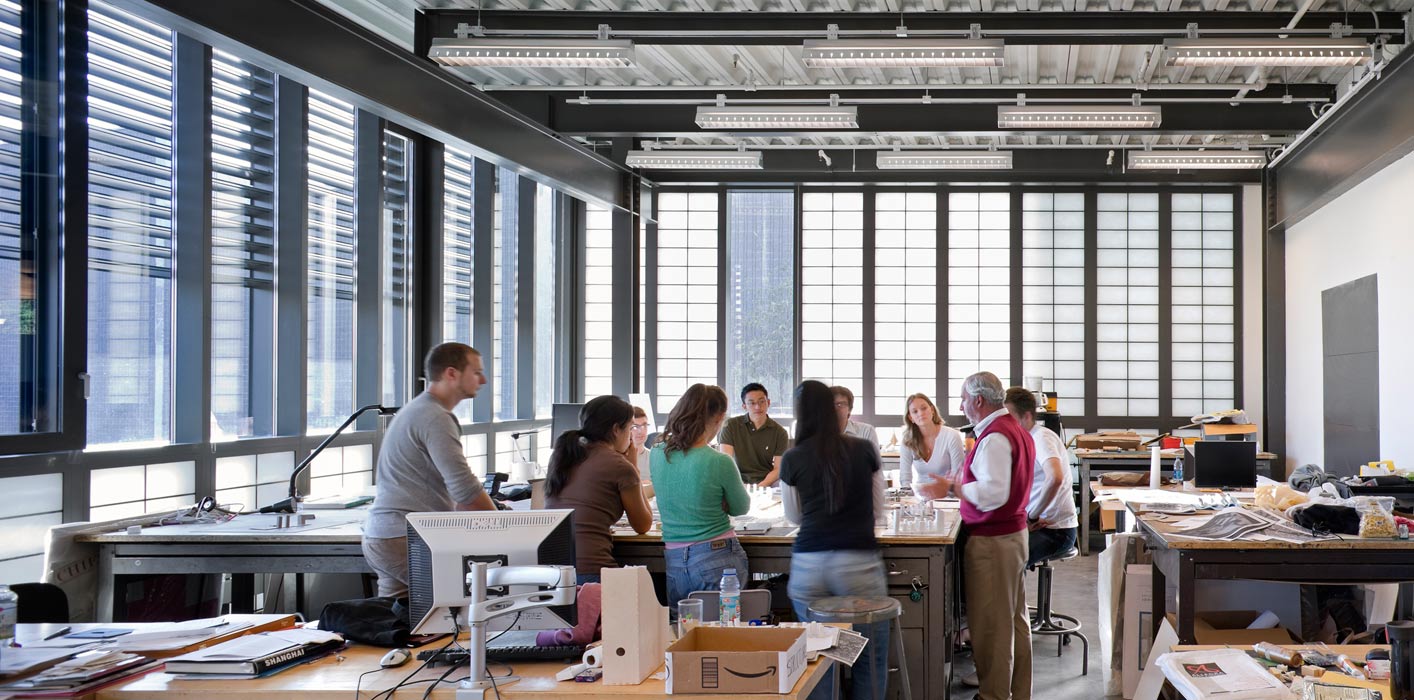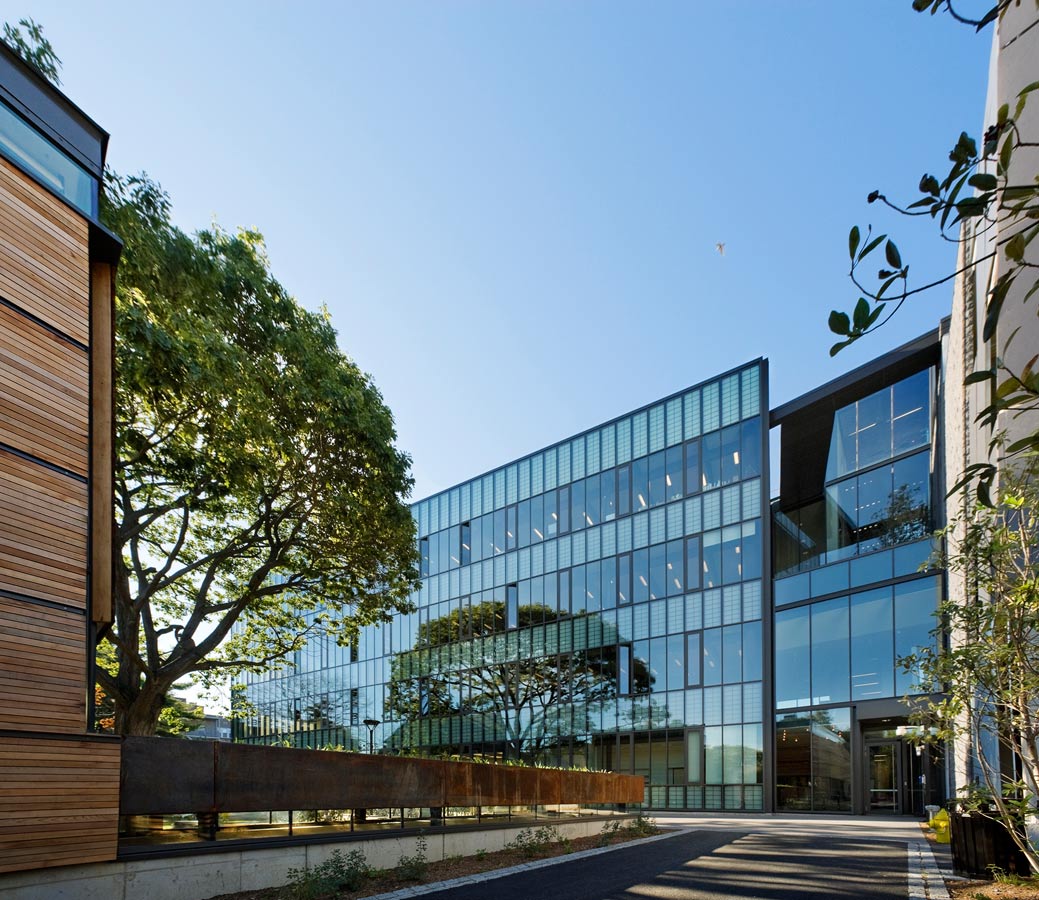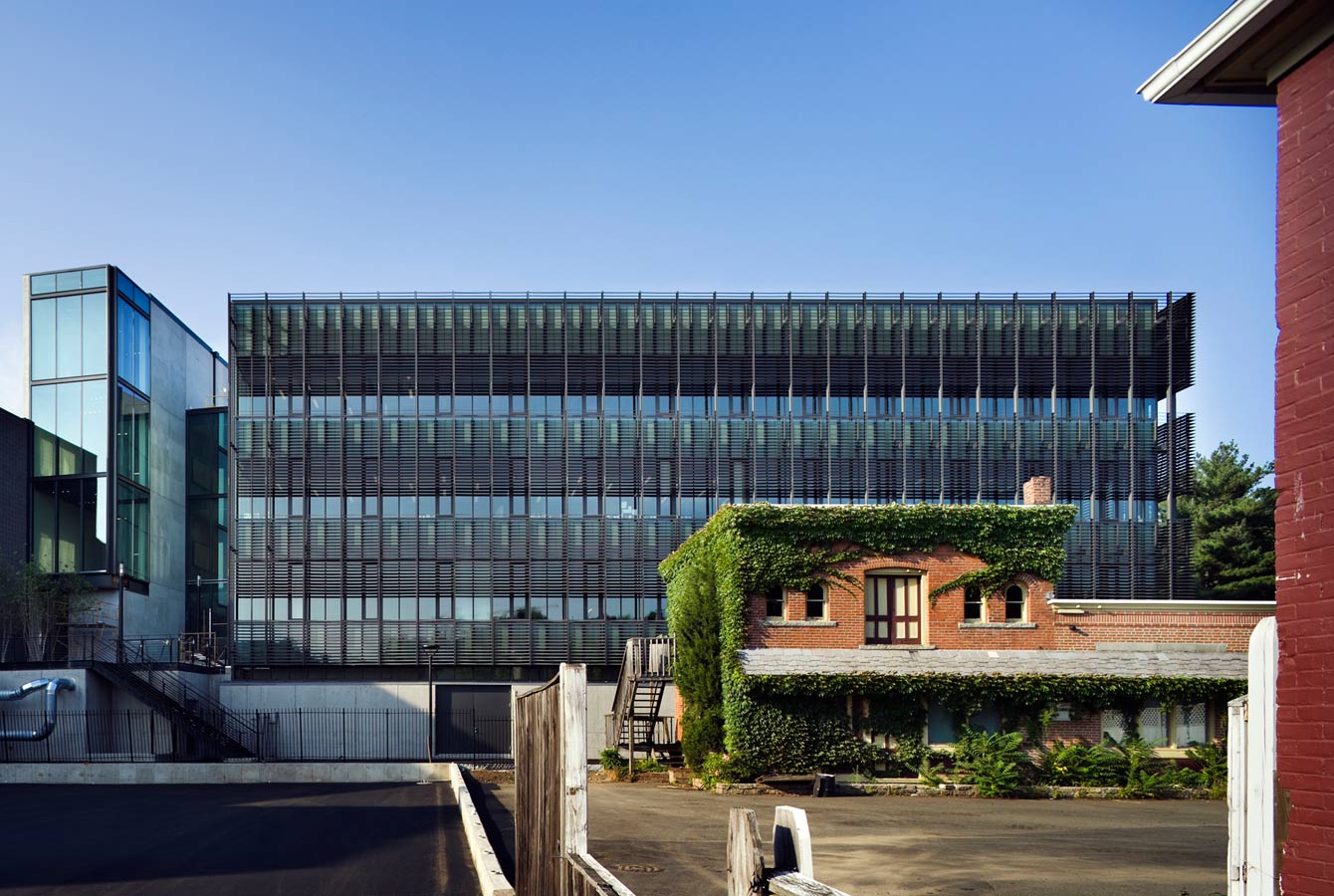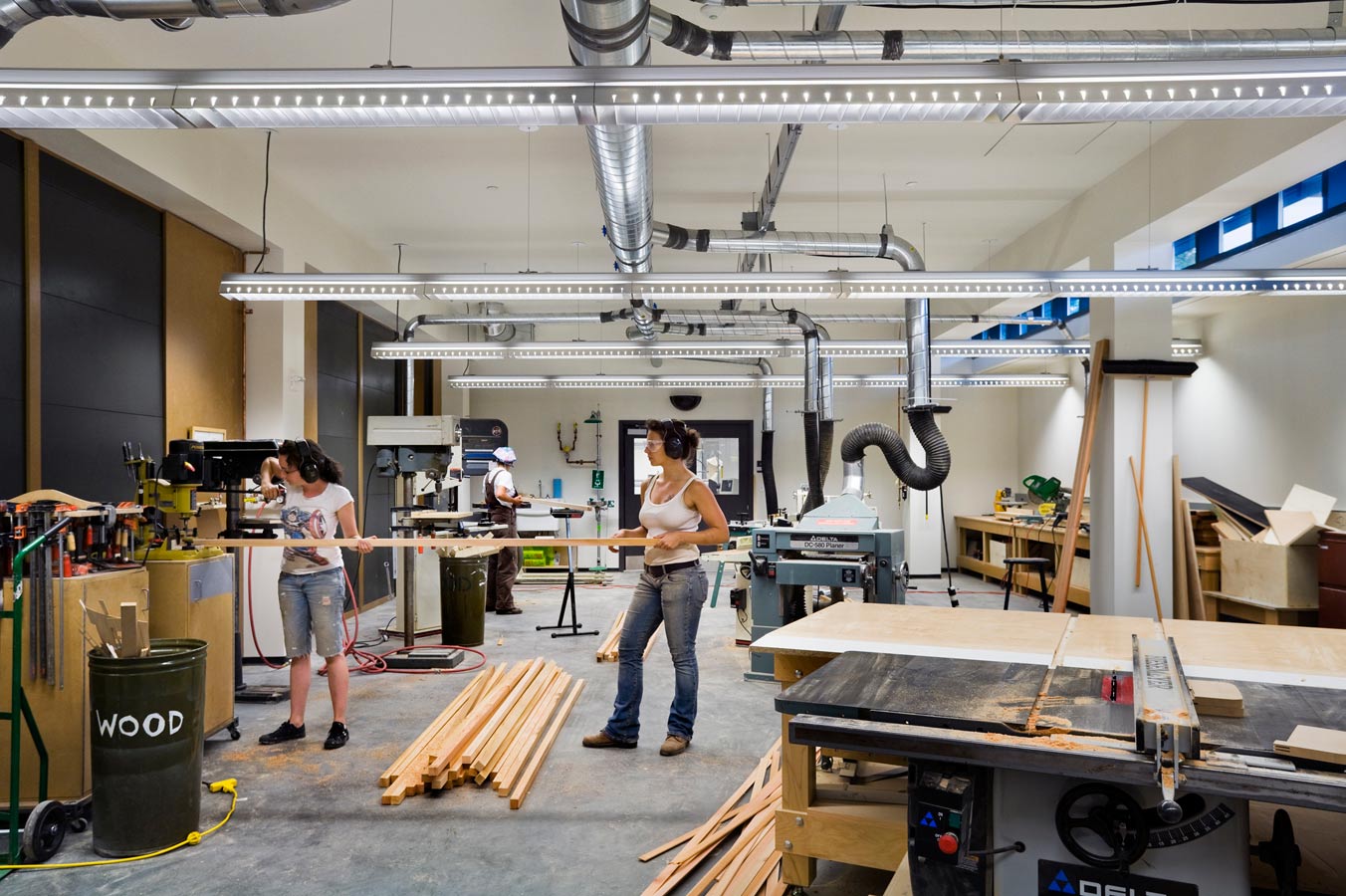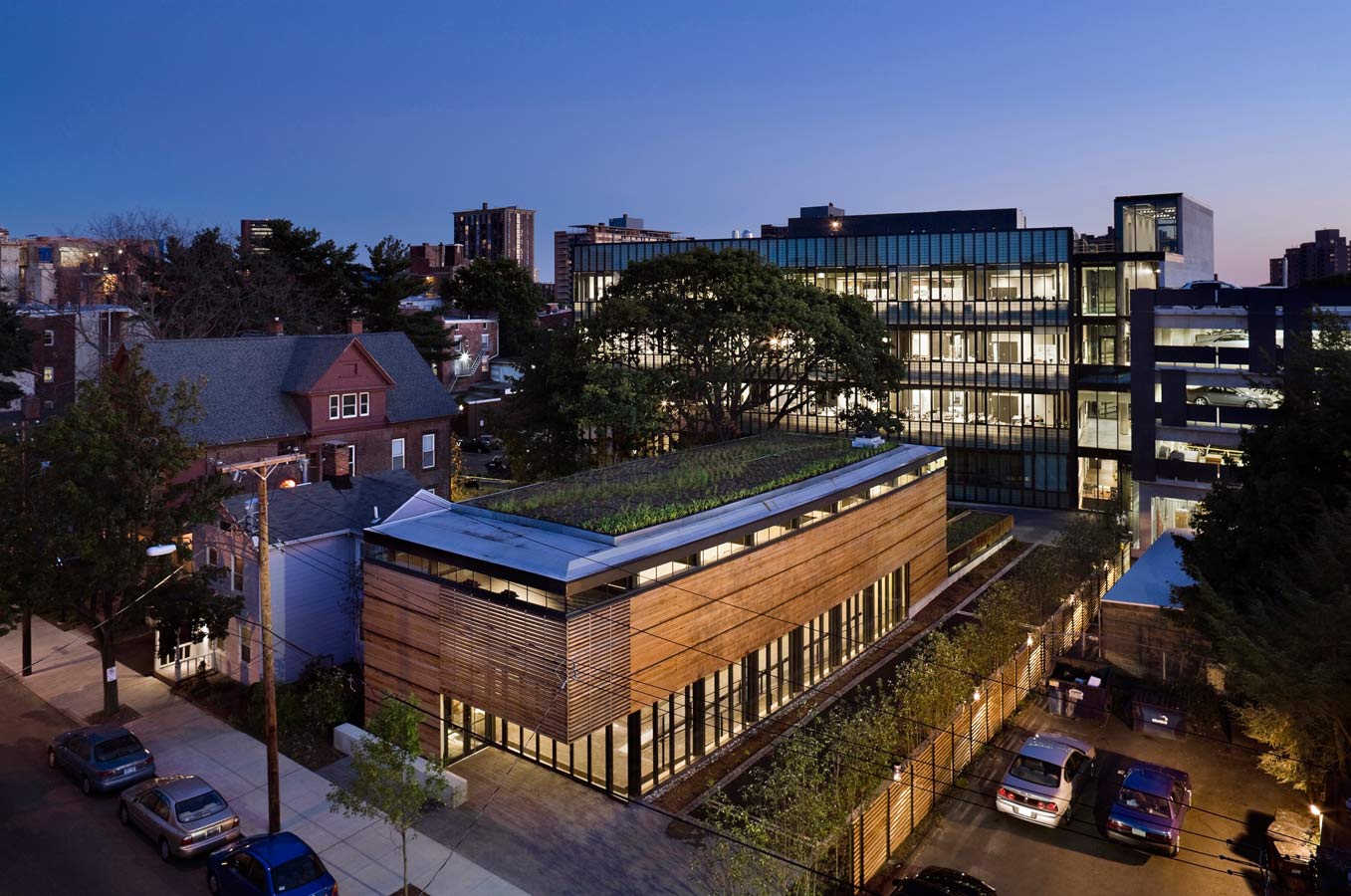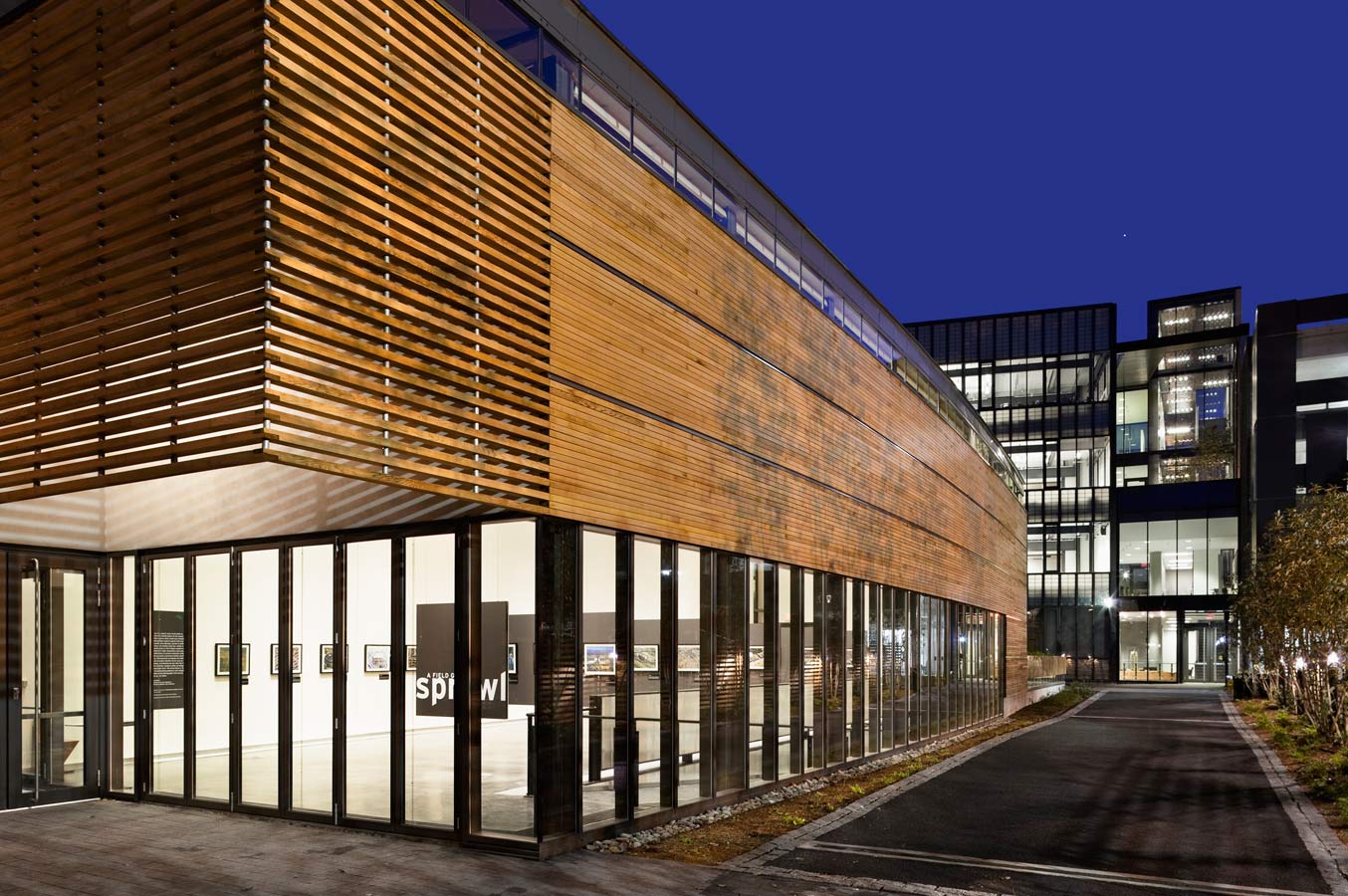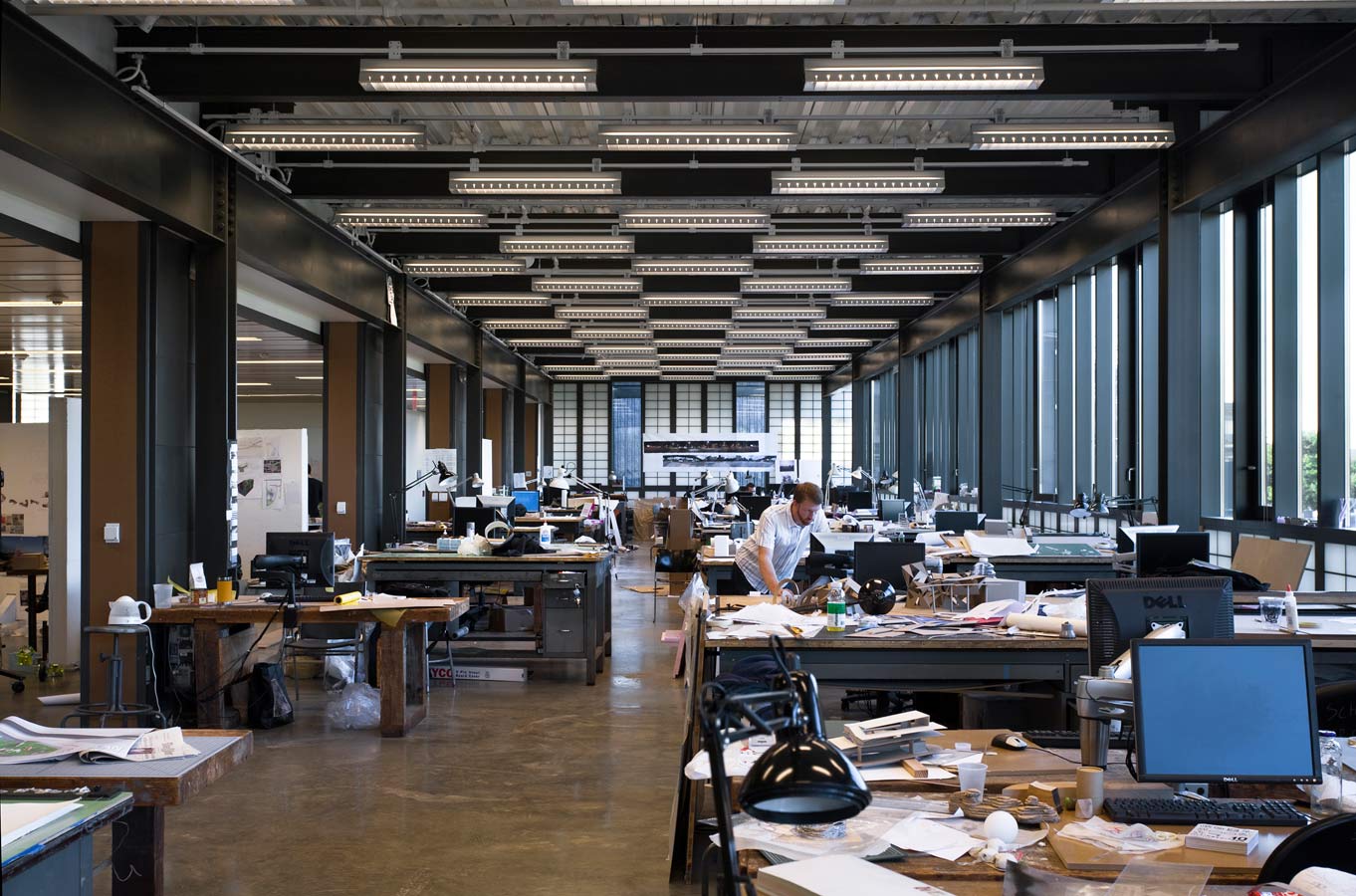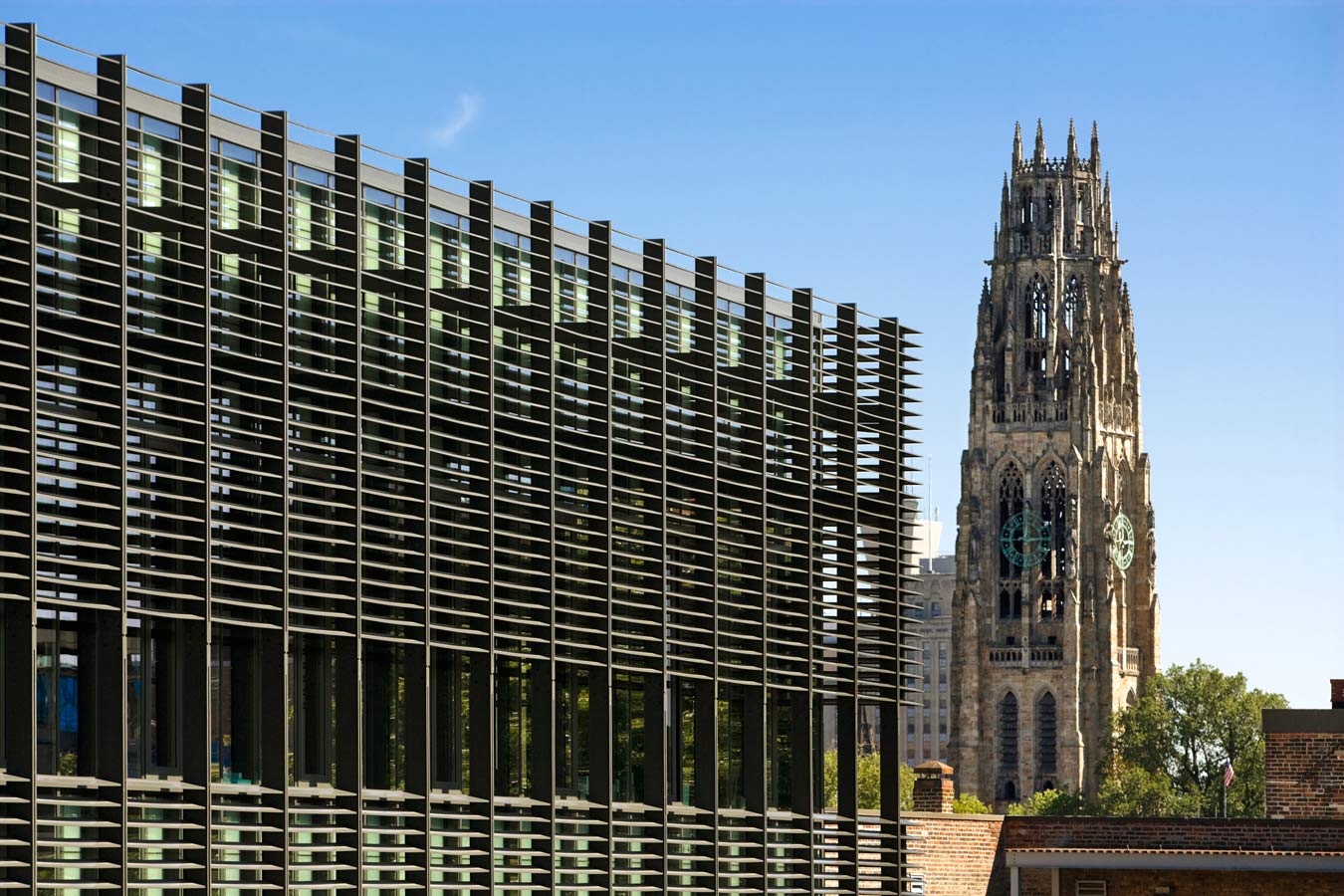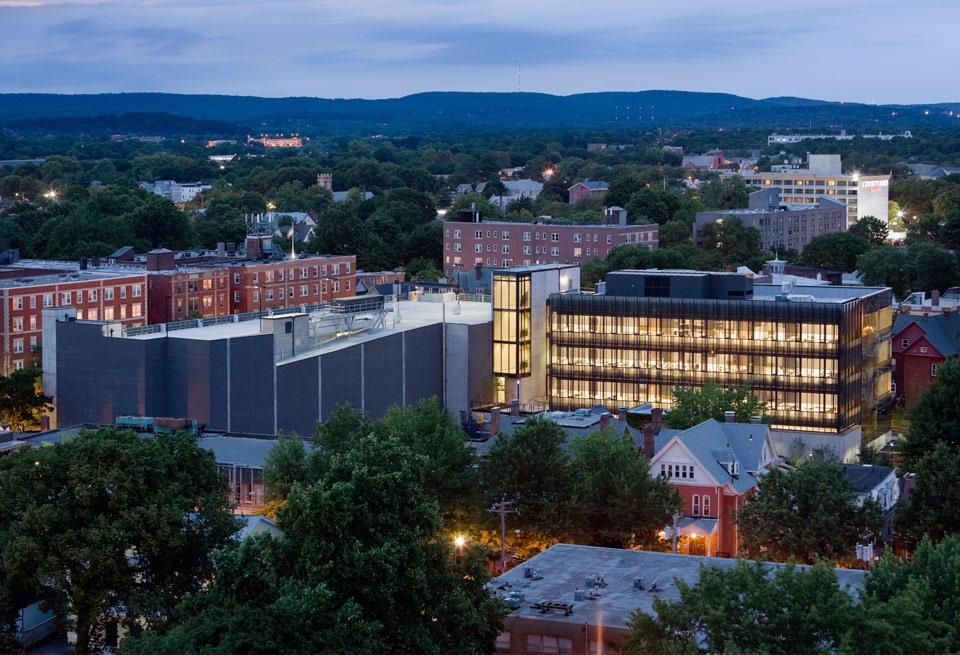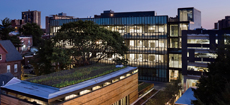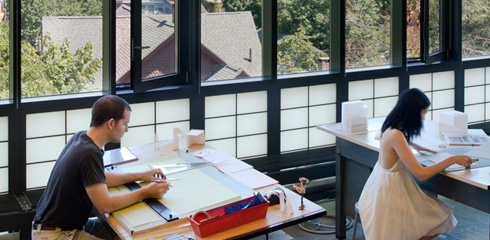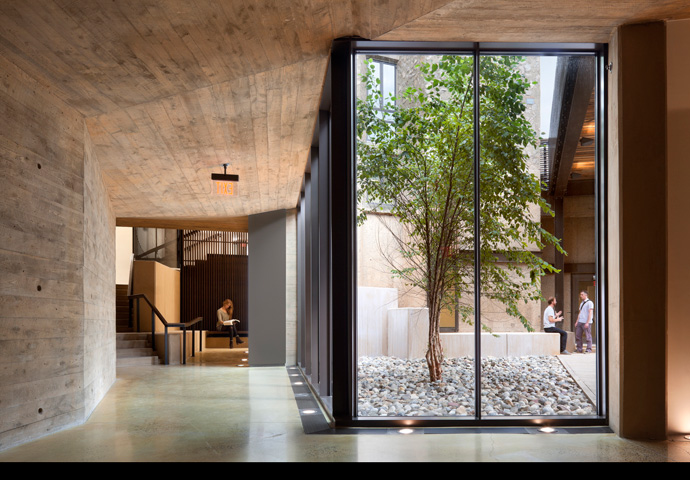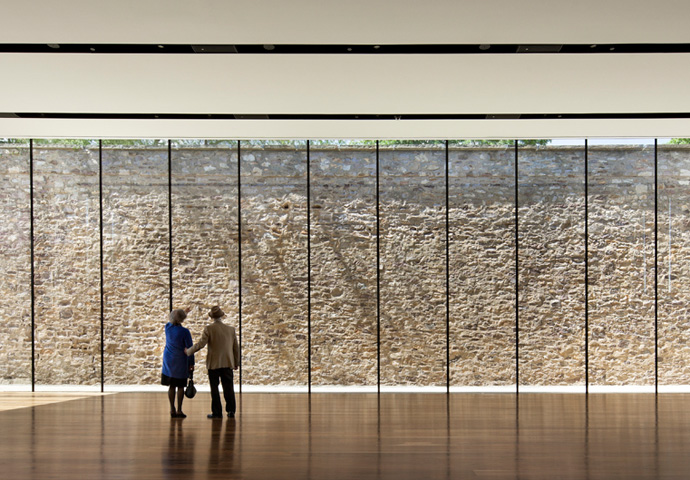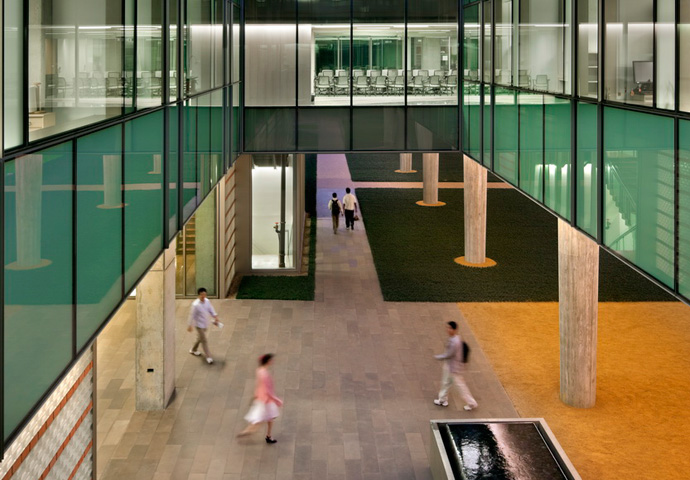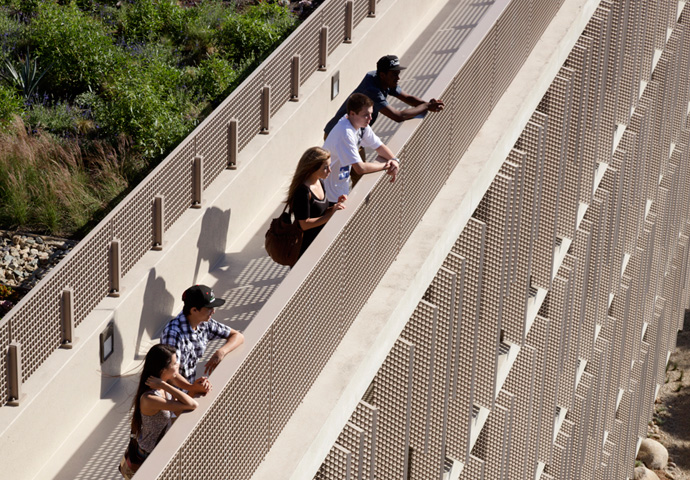How can we forge a new relationship between city and campus in the design of an innovative arts complex?
The art gallery, situated along the street front to engage the city of New Haven, is clad in a rainscreen of reclaimed western red cedar.
© Peter Aaron/OTTO
In the mid-1990s, Yale University undertook a ten-year master plan for the enhancement of buildings associated with its highly regarded programs in the arts, including works by Louis Kahn, Paul Rudolph, and other noted architects. The work was intended to improve the environment not only for students and faculty but also for the New Haven community. While much of the campus clusters about cloistered quadrangles that exclude the city, the new sculpture building and art gallery, known as 32 Edgewood Ave., sought to invert those historic patterns and invite the city into and through the site.
Reclaim
This openness was achieved by conceiving a plan for the urban brownfield site at the western edge of campus that would create perimeter street frontage where none previously existed. Originally, the gallery was intended to be included within the studio building. In order to exploit its potential to activate the street, the gallery was extracted from the main structure and placed along the perimeter, reclaiming an abandoned surface-level parking lot and creating appropriately scaled street frontage to blend with the historic houses along Edgewood Avenue. Like those houses, the gallery is clad in wood: Reclaimed western red cedar provides a rain screen wall. In nice weather, the glass walls of the front facade can fold away to extend the gallery into the street and create an open, inviting porch. Meanwhile, Howe Street to the west is enlivened by new retail space at ground level with a four-story parking garage above.
At night, the sculpture building functions as a lantern at the center of the block, illuminating the complex for safe passage by pedestrians.
© Peter Aaron/OTTO
The glass sculpture building stands behind the gallery at the center of the block, where it functions as a lantern, illuminating the complex from the core and fostering safe passage for pedestrians. The building was conceived as a loft, with four open floors and an exposed steel frame. The first floor contains an array of metal, wood, digital fabrication, and paint shops, along with offices and classrooms. The three upper floors contain studios that can be flexibly arrayed along the perimeter walls, with group critique and collaboration spaces at the center. Maintaining indoor air quality is a significant challenge within a workshop and studio building; we used a displacement ventilation system at the center of the floor plates that requires less fan and cooling energy while utilizing stratification to improve thermal comfort and more effectively remove contaminated air from the space.
Illuminate
The facade incorporates multiple layers to achieve high level of energy performance while remaining fully transparent.
© Peter Aaron/OTTO
The perimeter walls are entirely glazed with transparent and translucent panels, washing the fourteen-foot-high studios with natural light. To maintain a light transmitting envelope without compromising thermal performance, a curtainwall of triple glazing and insulating translucent spandrel panels was combined with an exterior sunshading system to control glare and prevent solar heat gain in the summer. The envelope not only offers exceptionally high performance but also creates an aesthetically unified building. Along the south wall, as seen against Yale's gothic structures beyond, the effect is an elegant contemporary gothic tracery derived entirely from the need to mitigate solar gain.
These three new buildings and their setting provide a center of activity for arts students, increasing interaction among the disciplines, while helping to advance Yale's plans for its arts facilities. Toward the goal of forging a new relationship with the city of New Haven at the edge of campus, the complex gains access from all four surrounding blocks. Four new landscaped passageways extend the arts program into the adjoining urban landscape while simultaneously inviting the city in.


